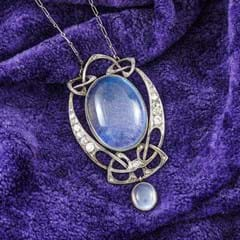The buyer's guide to English antique table clocks
England has a fine history of clockmaking and no model represents this tradition more than the table clock.
George III mahogany twin fusee table clock signed Benjamin Reed, Plymouth - £850 at Hartleys, Ilkley, June 2022.
Table clocks feature in many auctions on thesaleroom.com, some offered at specialist horology sales and others as part of general sales.
The term ‘table clock’ – along with those of ‘bracket clock’ and ‘mantel clocks’ – once had a very specific meaning but they have now become virtually interchangeable. Put simply, they are clocks that can sit on a table and (in an age when clocks were very expensive) were made to be more portable and smaller than standing clocks.
The key moment in the development of the English table clock came in the mid-17th century with the arrival of the pendulum as an aid to accurate timekeeping. The technology quickly spread around Europe and ushered in the so-called ‘Golden Age’ of English clockmaking.
During the period c.1665-1735 a series of important technological advancements took place, notably the use of the verge escapement – the mechanism that controls a mechanical clock’s rate so it advances at regular, consistent intervals or 'ticks'. This transformed the accuracy and reliability of mechanical timekeeping.
There were also significant changes in the outward appearance of the table clock: plain architectural cases quickly gave way to more decorative clocks adhering to the fashions of the time.
What to look for
Date of manufacture, maker, sophistication, case type and condition will all influence the value of a table clock.
Collectors are interested in owning clocks by well-known makers, so these will typically be more expensive. Many of the greatest names in English clockmaking produced table clocks including the workshops of the Knibb family, Thomas Tompion, Daniel Quare and George Graham.
Many of the ‘brand names’ are remembered for the quality of their work and horological ingenuity. Early clocks that demonstrate the story of English clockmaking or those with sophisticated movements allowing for quarter repeating (chiming to indicate each 15 minutes rather than hourly repeating which indicated each hour), long duration, musical chimes, calendars, moon phases and maintaining power are again likely to be more expensive than simple timekeepers.
However, there are plenty of other makers who produced fine clocks and many of whom worked outside London and whose work is admired for its sense of place.
Clocks that have deluxe case decoration will also be much sought after. This may be as simple as a beautifully engraved dial and backplate but could include silver mounts, boulle work or the use of luxury materials such as tortoiseshell, ormolu and exotic woods. Check the auction house’s catalogue description to see what each clock comes with.
You can find lower-priced models at auction, too. You could consider one of the many ‘revivalist’ clocks on the market – often good-looking replicas produced in the late 19th century.
Clocks that have undergone significant repair and restoration may no longer have so many of their original features but will look good and be cheaper than clocks that have survived in their original condition which are the ones preferred by collectors.
The auction catalogue should tell you about restoration to the clock and which features are original and which are newer. It should also tell you if the clock is in working order or needs repair.
You can request a condition report for further information in this regard. If the clock does require some attention, there are plenty of restorers who can help.

Brass mounted and ebony table clock, the movement by Henry Jones (1634-1694), London, c.1685 and later - £6200 at Bishop & Miller, Stowmarket, May 2022.
What to do next
Decide how much you’d like to spend and use the search facility on thesaleroom.com to find table clocks coming up for sale. Remember, some may be catalogued as mantel or bracket clocks so try searching for them too.
You can filter your search by, among other things, price and by location of the auction house to narrow down your selection.
To research recent prices at auction and see how much different clocks items sold for you can also try out the Price Guide.
If you are new to bidding check out our guides to buying at auction – it’s easy once you know how.













